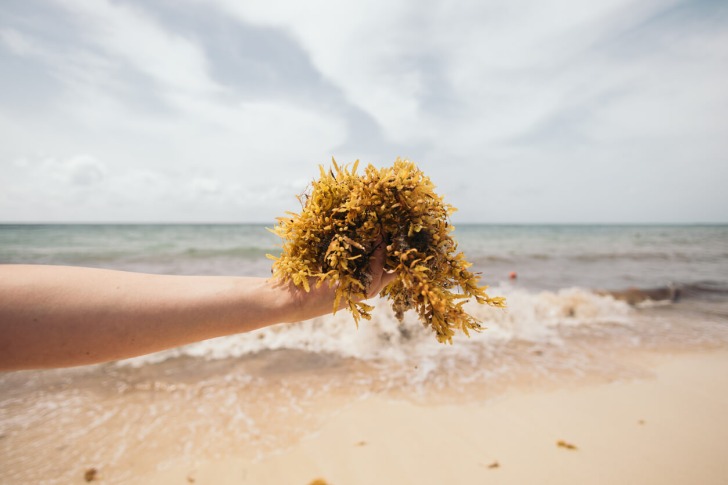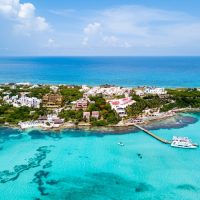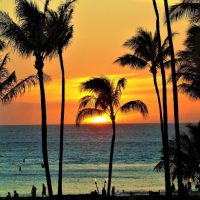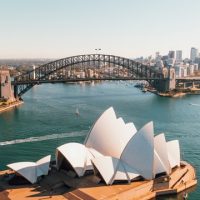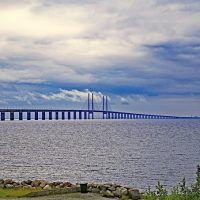Invasion of the “floating seaweed” sounds like a bad sci-fi movie, but these yearly flotillas of Sargassum are a decades-old problem.
It was first encountered by Christopher Columbus in 1492 in the open waters of what would later be known as the Sargasso Sea.
Sargassum can survive a wide range of environments.
It can be found to some degree in every ocean.
Only the Antarctic Ocean is spared the oily leaves.
It is most prevalent in its home ocean – some 10 million tons.
In 2011, an unusual weather pattern of strong winds and changeable ocean currents forced the seaweed behemoth into the Caribbean.
This change of scenery resulted in an unpleasantly aromatic and persistent problem for the tropics, courtesy of the North Atlantic Gyre.
The timing of Sargassum’s growth varies depending on geography.
Measured by satellite, the fall and winter months previously saw the heaviest growth, primarily in the Sargasso Sea.
But after the 2011 shift to the tropical Atlantic, sargassum floats have become common in the late spring to late summer months.
Just like hurricane season, peak seaweed season is seen in late June or July.
And just like hurricanes, some seaweed seasons see larger mats of growth than others.
Contents
Benefits of Seaweed Season
The Great Atlantic Sargassum Belt stretches from West Africa to the Gulf of Mexico.
Although inconvenient to vacationers and water enthusiasts, Sargassum floats are vital to the inhabitants of the ocean.
They serve as protective areas for shrimp, smaller fish, and crabs and a place where fish lay their eggs.
For landlubbers, sargassum seaweed contains numerous nutrients and can be consumed in limited quantities.
It is also a plentiful source of nitrogen, phosphorus, and potassium, an alternative crop fertilizer.
The seaweed, often referred to as the brown menace, is not itself dangerous or poisonous.
But as the float sits and heats in the beach sun, bacteria form and can be harmful.
Also, as the seaweed decomposes, it can cause irritation and breathing problems, especially for those with respiratory issues.
But tons of floating brown algae have drawbacks as well.
Once on land, the layer of seaweed negatively impacts the area.
Beached sargassum attracts insects.
It also destroys sea turtle nesting sites.
Rotting seaweed releases gases that smell.
Additionally, sargassum has also been linked to local fish die-offs.
Seaweed Season in Cancun
Cancun is a Meso-American beachy paradise.
Part of the Yucatán Peninsula, it sits on the Mexican Caribbean coast.
The ancient city of Cancun is popular for its vanilla sands and warm winds.
Each year, an estimated 17 million travelers visit the area to explore the ancient ruins or to dive and swim above the spectacular Meso-American Barrier Reef, the world’s second-largest coral reef.
Quanto Roo, the region surrounding Cancun and her islands, recently welcomed its 30th million visitors.
They are all in search of sun and crystal clear waters.
Unfortunately, Sargassum can hinder even the most determined of beachgoers.
In Cancun, the peak oceanic algae season hits the tropical coast each year between May and October.
The brown infiltration is oily and smelly and can expose beachgoers to small marine fauna.
The Cancun beaches most affected by Seaweed drifts include Del Nino, Las Perlas, and Chacmool.
Further down the coast, the sargassum increases on the beaches of Ballenas, Marlín, Delfines, and Nizuc Playa Coral.
It is usually the worst on the eastern shores of Cozumel Island, immediately offshore of Cancun.
One of the few Cancun areas that are predictably algae-free, even at the height of seaweed season, is Isla Mujeres Island.
This small island is a mecca for divers and sits roughly 6 miles off the coast of Cancun.
Another area that is consistently blue-flagged is the beaches west of Yucatan Point, approximately 100 miles from downtown Cancun.
All Cancun hotels keep a close eye on the annual sargassum forecast.
The city and neighboring beach towns have devised an easy-to-understand sargassum alert system.
Each beach has a color designation to indicate the sagassum level to visitors.
A green flag, very low, has very little, if any, flotsam on its sands.
A blue flag indicates that a beach is 100% seaweed-free.
As the flow of seaweed increases, the indicators change from yellow to orange and finally to red.
Yellow advises a moderate level; orange tells of an abundant amount of beach sargassum.
A red flag, similar to rip current warnings, sounds the alarm for an excessive amount of beach weed.
Uncontrolled seaweed mats prevent boating, water sports, and fishing.
These are all economic mainstays to the area. Unsurprisingly, Cancun, because of its dependence on tourism, has invested millions of dollars in sargassum forecasting and cleanup.
Citywide cleanups and non-profit organizations join in the efforts with an estimated 200 employees and volunteers.
The region has also implemented a sargassum emergency clean-up system that is activated at a specific level.
The larger hotels and resorts often hire private cleaning services to keep the sand clean and safe for their clientele, even at the height of the seaweed season.
So, when traveling to Cancun or any tropical beach, remember that the general algae season runs from Spring to fall.
The amount of Sargassum varies annually, but the seaweed season is as constant as the tides.
Frequently Asked Questions
What is Seaweed Season?
Each year, a brown type of seaweed, Sargassum, blooms.
Because it floats on the surface of the world’s oceans, this slimy water weed migrates.
Seaweed Season varies by geography but usually peaks mid-summer when the waters are warmest.
Are Sargassum and Seaweed the Same Thing?
Large and brown, Sargassum is a type of floating oceanic algae or seaweed.
It gathers in masses, never attaching to the sea bottom, and is home to abundant sea life, including plankton, small fish, birds, and swimming crustaceans.
Is Seaweed Dangerous?
Sea lice, the common name for jellyfish larvae, is often associated with sargassum mats.
Rice-sized and clear, contact can cause a red, itchy skin rash.
There is also the risk of bacterial development in Sargassum that remains on beaches.
Encounters with seaweed bacteria can cause rash, high fever, and nausea.
Can you swim in Sargassum?
Sargassum algae, unlike red algae blooms, is safe for swimming.
However, there is abundant life within the floats that may bite, sting, or cause reactions.
Also, sargassum mats are large and may cause disorientation for the inexperienced swimmer or diver.
Is Sargassum and Red Tide the same thing?
Ocean algae are classified as brown, red, or green.
The brown is usually referred to as Sargassum and exists in massive ocean floats worldwide.
Red algae produce toxins in a fast-growing infestation that discolors the water.
This pinkish-red hue is referred to as ‘Red Tide.’
The organisms that cause red tide can live within sargassum floats.
